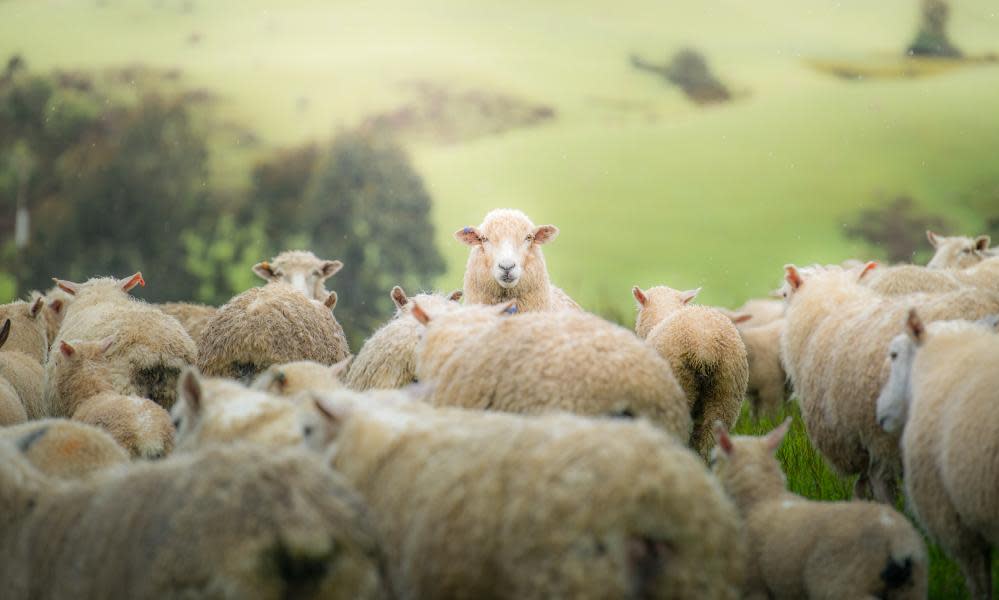New Zealand’s ratio of sheep to humans at lowest point in 170 years

New Zealand’s ratio of sheep to people has dropped below five to one for the first time since national population records began in the late 1850s.
The vast ovine herds that outnumber human New Zealanders are a long-running joke outside the country; one of a few nuggets of information about New Zealand – alongside its links to The Lord of the Rings and Jacinda Ardern – that is know by the rest of the world.
The country once had enough sheep to provide a small flock for every person, with the ratio peaking at 22 sheep for every human in the early 1980s. But with international wool markets in long decline, and forestry emerging as a more lucrative use of the land, sheep numbers in New Zealand have been dropping.
Related: New Zealand loses fight with Australia over mānuka honey trademark
National data released this week showed the national flock was 25.3m at June 2022 – a drop of 400,000, or 2% compared with the year before. With New Zealand’s estimated human population at 5.15 million, it was the lowest ratio of sheep to people since the 1850s, when national sheep numbers were first recorded, said Jason Attewell, Stats NZ general manager of economic and environment insights.
He noted that New Zealand remained ahead of Australia in maintaining its sheep-to-person crown. “Australia currently has three times as many sheep as New Zealand, though their ratio is only around three sheep to every Aussie,” Attewell said.
The global wool price has dropped significantly over the last decade: average export prices for New Zealand wool almost halved between 2013 and 2021, dropping from $6.74 a kilogram to $3.77. A price crash during the pandemic saw UK farmers getting an average price of just 32p a kilogram for wool – barely covering the cost of shearing.
In New Zealand, an increasing number of high country sheep farmers have been selling farms or converting them to forestry, which, with the prospect of selling carbon offsets, now offers high returns.
A 2022 independent report commissioned by farmers’ advocacy group Beef and Lamb NZ found that 175,000 hectares of whole sheep and beef farms had been sold with the intent to convert into forestry since 2017. It concluded that carbon-only farming was “a major driver of the increase in farm sales”, and from 2020-21 accounted for 39% of farm sales to forestry.

 Yahoo News
Yahoo News 
